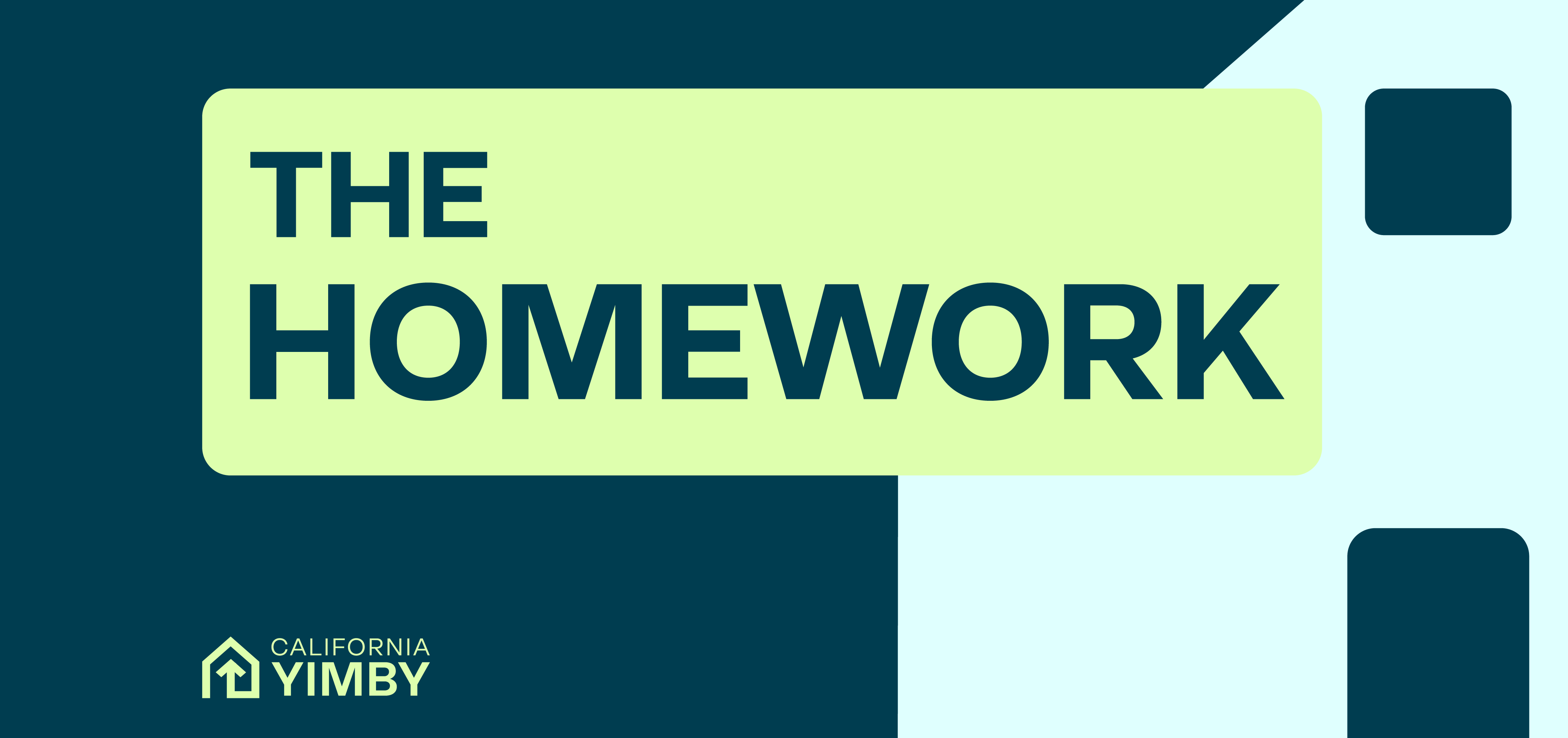The HomeWork: March 8, 2021

Welcome to the March 8, 2021 Main edition of The HomeWork, the official newsletter of California YIMBY — legislative updates, news clips, housing research and analysis, and the latest writings from the California YIMBY team.
News from Sacramento
Housing Research and Analysis
Location, Location, Location: Winning (and Losing) the Housing/Transit Lottery
Key takeaways:
- When households win an affordable home in San Francisco through the city’s housing lottery, their proximity to public transit and safe streets influences how often they ride transit, walk, or bike. When it comes to transit and bike infrastructure, “neighborhood-level accessibility has statistically significant and quantitatively meaningful impacts on household decisions about car ownership and travel.”
- The inverse is also true of the building’s parking availability per unit, which “not only influences car ownership, vehicle travel, and transit use, but has a stronger effect than transit accessibility.”
- While parking availability is a major influence in transportation choices, it does not yield any commensurate benefit for better employment opportunities.
Two Great Tastes, Taste Great Together: How Social Housing Closes the Gap
- The volatile business cycle weakens the construction labor pipeline and inhibits the production of housing for low- and moderate-income housing. A public housing development corporation could step in to support housing construction during downturns.
- While the poorest Californians don’t have enough money to secure housing on the private market, middle-income households are priced out of California’s supply-constrained market while also earning too much to qualify for most housing subsidy programs. Public housing could meet their needs, as well.
- In the past, America’s maintained and reinforced patterns of segregation and concentrated poverty. Mixed-income rental housing and long-term leasehold ownership models can pave the way for fiscally self-sustaining public housing.
Black Housing Heroes: Jon Wizard
Housing Headers
- How Berkeley Beat Back NIMBYs
- The Upzoning Wave Finally Catches Up to California
- Is this the end of single-family zoning in the Bay Area?
- America’s racist housing rules really can be fixed
- Busting seven myths about affordable housing in Fresno County
- Single-family zoning must be eliminated to end the racist origins of Berkeley’s zoning
- AB 946 Would Create 23,000 First-Time Homebuyers
California Freeway Expansion Projects Induce Travel
Upcoming Events
March 9: California’s 2021 State Housing Bills: What You Need to Know
The Legislature is officially back in session, and a raft of new housing measures are under consideration. Join California YIMBY on March 9 for a deep dive into proposals that would address our housing shortage and affordability crisis. We’ll take your questions and help you find opportunities to advocate for more homes. RSVP here.
RSVP NOW »
YIMBY Social – Top Posts
Share the good word
We welcome your ideas and feedback — send story tips and ideas to Homework@cayimby.org.
Did someone forward this email to you? Sign up to get it here.
